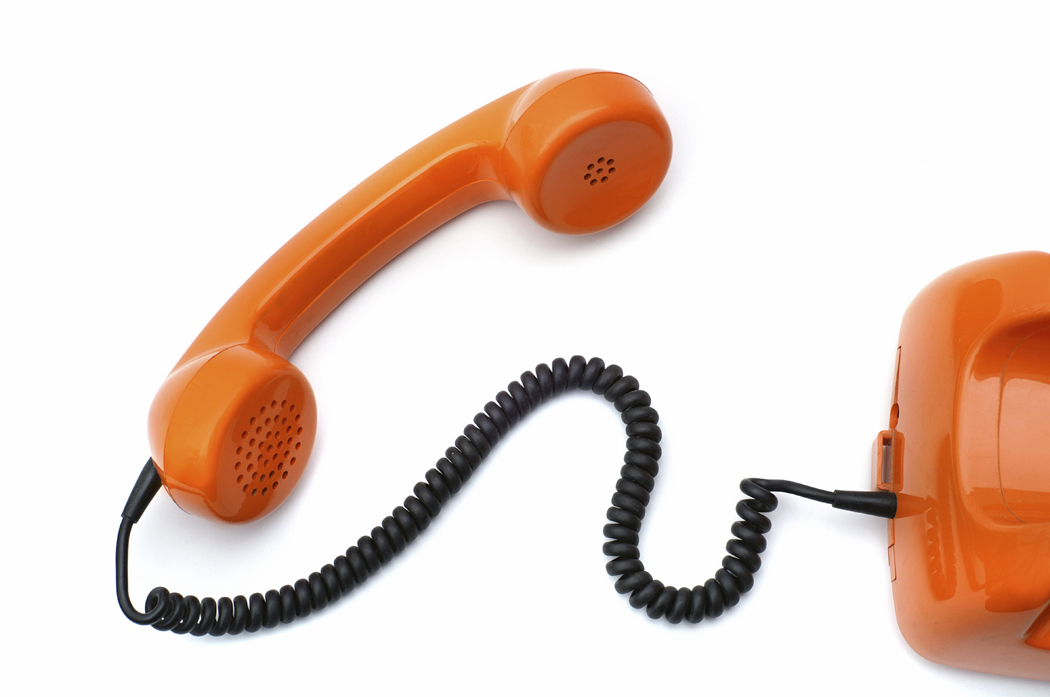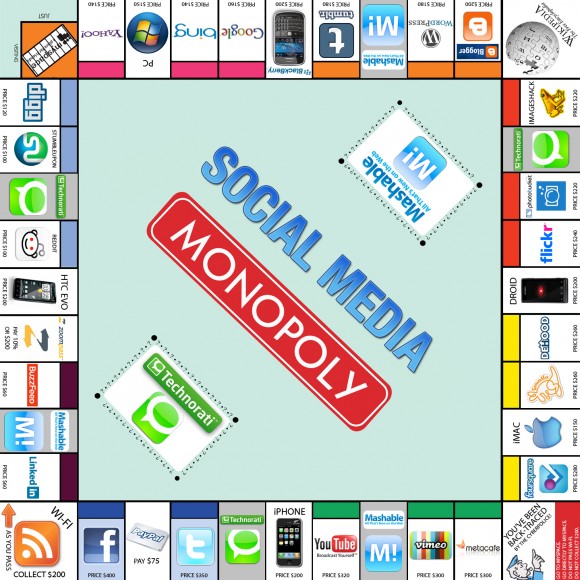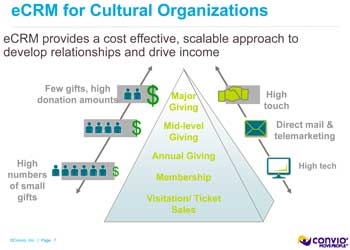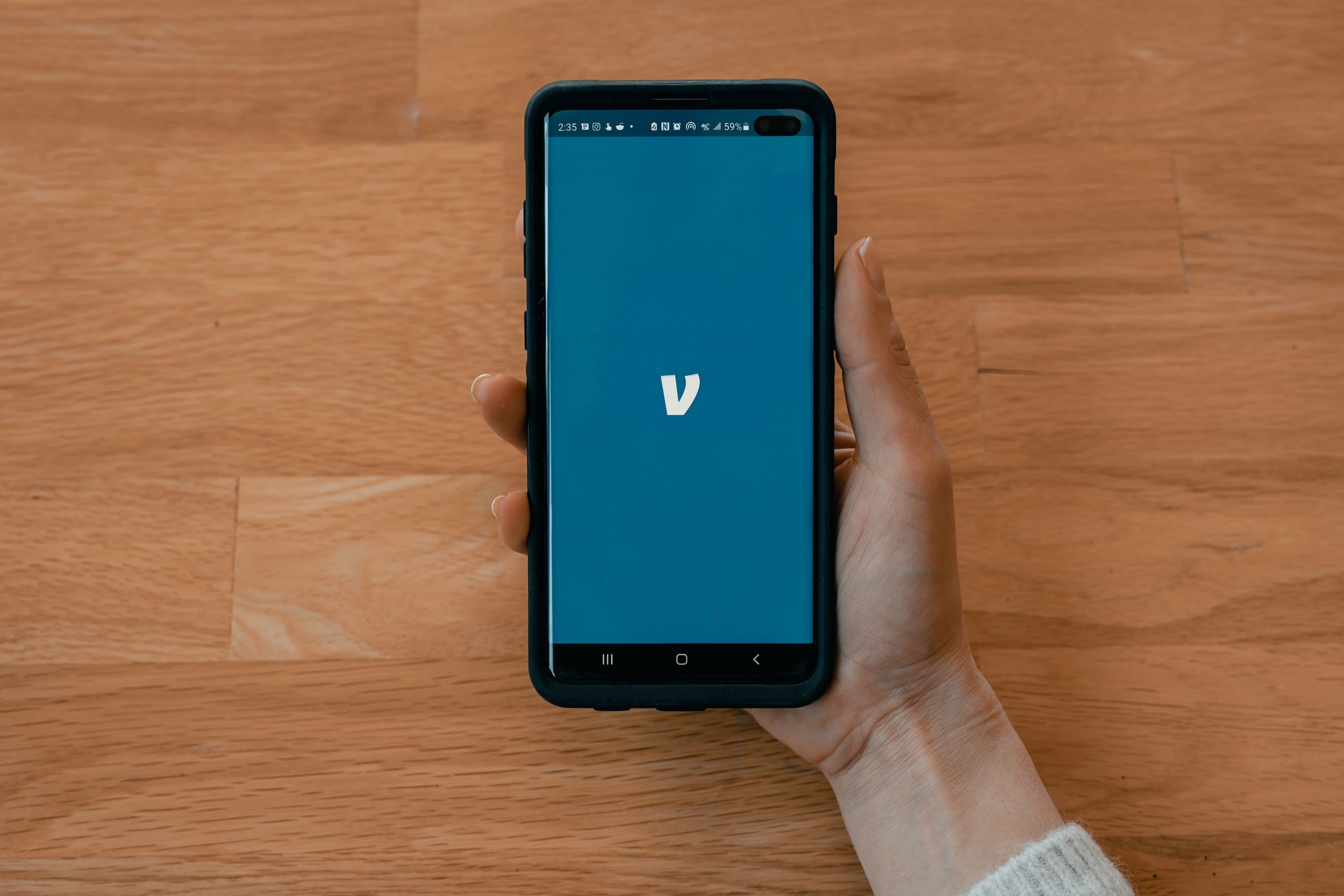Fundraising is the lifeblood of any non-profit organization. Not only is it the primary way to raise money for your organization’s cause, but it also keeps your organization running day-to-day to work on sustaining its mission. Your nonprofit should always be looking for new donation tools as part of your digital strategy. Non-profit fundraising has been made easier than ever before with the creation of technology and apps, such as Venmo.
Navigating the Ethics of Using AI for Donor Solicitation
AI has been slowing encroaching on every facet of modern life. It runs our phones, it navigates our vehicles, and has even began finishing our sentences. As of now, its integration into our everyday life has been mundane. Since AI operates most effectively behind the scenes and is difficult to explain to the average consumer, most products that utilize it do not necessarily draw much attention to it. Negative connotations among the public may prevent business from directly or overtly acknowledging the use of AI in their products or administration, but it certainly does not stop them from utilizing it. AI is bolstering many forms of business management technology, and the nonprofit sector is starting to reap its benefits. With so much of nonprofits reputations relying on trust and good faith connections between stakeholders, donors, and staff, what happens when AI is introduced into the dynamic?
Digital Providers for Matching Gifts and Volunteer Matching
Fundraisers take note: it is estimated that four to seven billion dollars a year goes unmatched by nonprofit organizations. Eighteen million people around the globe have access to a matching gift program, and it’s been surveyed that one in every three people who donate would actually be willing to donate more if they knew their donation could be matched in the first place. Matching gift programs and volunteer grant programs are more inclusive of corporate employees because the causes that they feel personally motivated to donate to or volunteer with are recognized and rewarded by their employers. The digital marketplace for these opportunities is growing making it easier for nonprofits to find their match.
Nonprofit Technology Conference #18NTC
NTEN's annual conference is always a special treat. Vendors and attendees all focused on making the world a better place while investigating the appropriate role technology plays in that transformation. With 144 sessions plus keynotes, Birds of a Feather lunch tables, Ignite talks and pre-conference workshops, to say the conference is robust is an understatement. The following are my main take-away from the conference, but if you are curious for more, be sure to check out their social channels with hashtag #18NTC.
The Data Divide: Small NPOs have Different Needs
Selling Online: An Abridged History of E-Commerce
When you need a book, you no longer jump in a car and drive to a bookstore. Instead, with just a few clicks on the computer, your book will be waiting at your front door in two days or instantly online. E-Commerce has become a natural and regular part of people’s lives, and nonprofits should evaluate this trend when managing their revenue sources.
Research Update: Crowd-Funding through Google
With the development of crowd-funding programs through companies such as Kickstarter, Indiegogo, and Patreon, artists have many new ways to generate both funding and visibility. Arts and culture organizations have a harder time competing with individual artists on these platforms. In an effort to assist these organizations as they try to change the world, Google now offers its own crowd-funding platform for nonprofit organizations: Google’s One Today.
Telemarketing is Dead - and I killed it
 Fundraising for nonprofit organizations is considered an art, not a perfect science, and it's clear that techniques must be tailored to each individual organization. One of the common pieces of wisdom is that “telephone appeals” (read: telemarketing) consistently work as a fundraising tool for nonprofit arts organizations. I’m not saying random cold calls, but calling people who have funded you before, have a history with your organization and would likely donate again. Nearly one out of every five people will respond and donate to your organization calling and asking for money.
As a Millennial consumer, I cannot fathom this.
Fundraising for nonprofit organizations is considered an art, not a perfect science, and it's clear that techniques must be tailored to each individual organization. One of the common pieces of wisdom is that “telephone appeals” (read: telemarketing) consistently work as a fundraising tool for nonprofit arts organizations. I’m not saying random cold calls, but calling people who have funded you before, have a history with your organization and would likely donate again. Nearly one out of every five people will respond and donate to your organization calling and asking for money.
As a Millennial consumer, I cannot fathom this.
I, and perhaps you, dear Reader, belong to a generation simply called “Millennials”. Spell check doesn’t know that word yet, but soon it will. We are defined not by high technological competency, which is given to the generation directly before us, but by technological connectedness. I've had a series of experiences which have lead me to create these conclusions about the relationship between Millennials and telemarketing. Millennials, who by the way love to donate, have been raised in a society where everything is connected electronically.
With that connectedness comes with a degree of anonymity. While relationships formed over the web can become as close and as intimate as the penpals of old, they take time. They are cultivated with mutual respect and friendship and while our messages may travel instantly from one to the other, the relationship is built up more slowly.
In this age of instant communication, I think the telemarketing approach is dead to those arts organizations that wish to solicit donations from Millennials. My telephone is reserved for my parents and my grandma, and for calling Renee to let her know I’m outside her building and would she please let me in.
I have had organizations, which I have supported in the past, call me on the phone and ask for donations. It never works.
They always follow a certain pattern. The telemarketer introduces themselves, and asks your name - here again, trying to build up a relationship. But I, the Millennial consumer, am used to long exchanges on Tumblr before ever learning anything than the other person’s username, so that tactic falls short. I thrive in the anonymity of the internet, and this direct and sudden confrontation with a stranger frightens me like a deer in headlights.
Then the telemarketer will try to tell me about the organizations hardships this year; how an economic recession has set them back, or how government legislation has made their work more difficult, could I please help with their annual fund? I, the Millennial consumer, just watched a video of the violence in Syria this morning - you’re trying to tell me you have problems? The problems I care about are the ones involving life and death - and I will negate your ask at every turn.
Finally, the telemarketer has been instructed to ask three times before respectfully hanging up. Are you kidding me? I, the Millennial consumer, tweet, reblog, and share on Facebook all while drinking my caramel latte and finishing an accounting assignment. Your long phone call is wasting my time. Why didn’t you understand when I first said ‘no’? Are you trying to guilt me into this? This is ridiculous. I will never give to this organization again, and their number is now blocked on my phone.
In truth, this all could have been avoided if this organization, who clearly have a record on me, had just emailed me their ask with a direct link, explaining that they need help with their annual fund. The anonymity is intact, I no longer have an individual I don’t know trying to force me into the intimate donor relationship. They haven’t insulted me with blowing their issues into hyperboles (while important to the organization, meaningless to me). And it took all of two seconds to click the link and another to type in my credit card number.
What I’m saying here is, if you’re catering to a mature audience, use telemarketing. Statistically, it works. And probably you’re already using online direct asks in some form, whether its email or otherwise. What I’m hoping you’ll do is pay more attention to who gets what message. If you’re reaching for the Millennials, those fun-loving young kids, maybe tweet them. Email them. Ask them when they attend your next party.
For the love of art, though, do not call.
Streaming, streaming everywhere
 Last week YouTube did a two-day test to preview streaming capability, a move that would place them directly in competition with streaming sites such as livestream, ustream, and justin.tv. Streaming capability was available to four select YouTube partners — Next New Networks, Howcast, Young Hollywood, and Rocketboom for two days. Like the existing streaming sites, YouTube will allow for real-time comments and, eventually, embedding in widgets and archiving old streams.
Last week YouTube did a two-day test to preview streaming capability, a move that would place them directly in competition with streaming sites such as livestream, ustream, and justin.tv. Streaming capability was available to four select YouTube partners — Next New Networks, Howcast, Young Hollywood, and Rocketboom for two days. Like the existing streaming sites, YouTube will allow for real-time comments and, eventually, embedding in widgets and archiving old streams.
In all of YouTube’s communications , they only address giving this capability to their “content partners” anytime in the near future. YouTube content partners are people and companies that post regularly to the site and apply to YouTube in order to monetize their content with ads and rentals, obtain better quality for their uploads, and use YouTube’s Insight analytics tools. (Note: YouTube has a special program for non-profit partners. Check it out.)
Evan Rosenberg of Anaheim Ballet, a member of YouTube’s nonprofit program, produces the series “Anaheim Ballet: More Than Dance…” (See below for an excerpt.) He described the company’s hopes for its channel.
“YouTube has made it possible to not only showcase ourselves (Anaheim Ballet), but ballet in general to a global audience to the tune of over 24 million views. We look forward to using this additional tool (live streaming) in our continuing effort to spread the art of ballet across cultural, age, and economic boundaries.”
One of the videos on Anaheim Ballet's YouTube channel.
What are the implications for performing and performance arts organizations as streaming video becomes more and more ubiquitous? As a company or an artist, live performance is our product. Thus, we have faced issues with online video platforms since their rise in popularity:
We wonder if capturing that artistic product and distributing it online dilutes the aesthetic appeal.
We wonder if we should side with our artists and unions who deserve credit, payment, and a future in their industry, or with the insistent board member who says we must post video to capture the elusive younger market segment. We wonder if these interests are indeed in conflict.
We wonder if it cannibalizes box office revenues. And we wonder if we should give our audience members more credit; we know the difference between live performance and video, and so do they…right?
Online video is here to stay. This announcement is one more step in a long staircase of live streaming video becoming the norm. Fifteen years ago everyone had to have a website. Four years ago everyone had to have a Facebook page. Last year, everyone was going to mobile apps. With YouTube’s announcement, it’s easy to see performance footage moving from the movie theatre and the ballpark to laptops, phones, and iPads.
Speaking of new platforms for video, is everyone aware of the changes coming up for Twitter?
Building “Real World” Relationships Online: Alan Cooke of Convio

- Alan Cooke of Convio
Alan Cooke knows arts donors. This opera-lover also happens to be a master marketer (formerly with Hewlett Packard) and he puts his passion and his skills to good use at fundraising software company Convio, specializing in systems for non-profit organizations across the spectrum.
Convio’s most visible campaign is likely the Susan G. Komen Race for the Cure team fundraising efforts. (They have also done a fantastic job with Pittsburgh’s own Carnegie Museum.) However, Convio provides a range of different tools—at the core is Convio online marketing, which is a collection of tools—email marketing, website design, platforms for peer-to-peer fundraising, etc.
I recently interviewed Alan after seeing his presentation on online fundraising at the Opera America Conference in June.
Arts organizations, more often than other non-profits, have two messages that they’re getting out there. They’re asking people to buy tickets and on the other hand, they’re asking for a donations. How do you find that different from your other non-profit clients when you’re working with performing arts organizations?
The ticket-selling organizations are a little bit different from the majority of our organizations which only have contributed income. I think that, in terms of opera companies, many people really don’t understand the economic model of an opera company very well. I certainly did not understand that when I was an occasional single ticket buyer for the opera.
Perhaps one of the things that needs to happen is that organizations need to do a much better job, first of all, of making the case that simply selling tickets is not going to cover the cost of the productions. A lot of that is just education. You can make that case pretty well on your website and also through your communications with people, but you do need to make that case. Secondly, there’s the question of where you want to start. In the case of ticket-selling organizations, it’s logical to optimize your website for ticket purchases. There are things that you can do after someone has actually purchased a ticket where you can start to move them down a path and start to make your case--really simple things, like when they buy a ticket give them the option of making a small donation or trying to get people on a monthly plan where they’re giving a relatively small contributions every month. It’s automatic, you don’t have to worry about it and typically the lifetime value of those donors is very, very high.
One of the things that I have seen with digital communications in arts organizations is that you have the marketing department… And then you have the development department. Sometimes they play together very well, but sometimes, you’ll see accounts that are very obviously controlled by one or the other, and not a lot of overall relationship building. Your thoughts?
This problem of silos is a very common problem throughout the whole non-profit world. I think we have marketing departments that have their own agenda and their own tools and then you have a development department that has their own separate tools and they don’t talk about it to each other very much, which causes all kinds of confusion. Breaking down those organizational silos is easier said than done. Often smaller organizations have an easier time because they have fewer people, but as organizations get large, those walls sometimes can become very, very strong. It’s true that there is a lot of marketing chatter, which often doesn’t have very much to do with relationships. I think we’re starting to figure out how to build relationships the way that the development people have always done—you can do those same things online.
A lot of organizations are getting people’s email addresses after they’ve attended one performance and then they get an email asking for, for example, a $150 donation. Marc Van Bree has made the point that that’s like asking someone to marry you after the first date.
That’s right. It’s all about relationships. The online world is not dramatically different from the real world. You need to ask permission and you need to build a relationship with somebody before you start hitting them up for money. That’s a simple thing to do but there’s a surprising number of people who don’t do that.
Then how do you build that relationship and making the case for support to new pools of donors? In your Opera America session, you mentioned the concept of a welcome series.
 So, the idea of a welcome series is that when somebody takes that step of raising their hand and saying, “I am interested in what it is that you have to offer” by giving you their email address, at that point you can’t just ignore them. You can’t just take it for granted and then immediately start asking them for money. Just like you would in a normal face-to-face relationship, you need to welcome that person to your community and you do that by seeking out some spaced email communications thanking the people for getting to know your organization and giving them some background information. Gradually, as you move down what we refer to as the relationship pathway, you give them more and more ways to become involved and to get more deeply embedded in the culture of the organization.
So, the idea of a welcome series is that when somebody takes that step of raising their hand and saying, “I am interested in what it is that you have to offer” by giving you their email address, at that point you can’t just ignore them. You can’t just take it for granted and then immediately start asking them for money. Just like you would in a normal face-to-face relationship, you need to welcome that person to your community and you do that by seeking out some spaced email communications thanking the people for getting to know your organization and giving them some background information. Gradually, as you move down what we refer to as the relationship pathway, you give them more and more ways to become involved and to get more deeply embedded in the culture of the organization.
One of the very good things about using a technology platform is that you can automate all that, so you don’t have to write these things every time. It can be completely built out beforehand and automated. And we have found that by doing that, by making sure that as soon as someone joins your list, they get put into that communication stream. Not only are the open rates higher, but the conversion rates are much higher. And once they actually convert and donate, becoming a financial supporter of the organization, you can take them out of that stream and put them in a different stream. All of that can be automated and set up quite easily.
One of the ways that you mentioned non-profit arts organizations could combat the current economic climate is to reposition themselves as a community resource. How can an organization do that via digital means?
This came out of a conversation that I had with the general manager of my local opera company in Austin and I think that what they had said was fascinating. The difficulty that they encounter, especially in a medium-sized market like Austin, Texas, is that it’s not easy to sell opera. There is a relatively small audience for opera in that kind of a city and particularly in times of recession, it’s difficult to make the case. So this was an enormous struggle for the opera company in Austin, as I feel it is for many opera companies.
What they decided to do, which I thought was very clever of them, was they built an excellent music school on the premises right next to the concert hall and they started to garner quite a bit of attention in the city because of the quality of the music education that they offered to children. They had promoted that pretty heavily on their website and they have started to build a whole new pool of supporters for the opera who are people who would have never been on their list before—parents of children who now go to the school at the opera. It’s a completely new donor pool for them and it’s a donor pool that is amenable to different techniques, so they have started to do a fair amount of online fundraising to that audience, and that’s been pretty effective. They are obviously younger people and people who are not perhaps as familiar with the opera as the traditional audience. It’s basically given them a new pool of donors.
I heard that you recently added a database component to your collection of online tools. Tell me about that.
 The database component an interesting new development for us. There are obviously a lot of vendors out there that sell databases to non-profit clients, but it became apparent to us that a lot of clients didn’t only want a set of on-line tools. They wanted a set of online tools, but they also wanted an entire CRM [Customer Relationship Management] system, where everything worked together. I think we have done a pretty good job in the past of integrating with programs like Raiser’s Edge. Data flows back into the master database and flows the other way. But it became apparent that a lot of those database tools were expensive and were relatively complex and that there was an opportunity for us to build a more integrated system together, and that was really the approach that we took.
The database component an interesting new development for us. There are obviously a lot of vendors out there that sell databases to non-profit clients, but it became apparent to us that a lot of clients didn’t only want a set of on-line tools. They wanted a set of online tools, but they also wanted an entire CRM [Customer Relationship Management] system, where everything worked together. I think we have done a pretty good job in the past of integrating with programs like Raiser’s Edge. Data flows back into the master database and flows the other way. But it became apparent that a lot of those database tools were expensive and were relatively complex and that there was an opportunity for us to build a more integrated system together, and that was really the approach that we took.
What we decided to do rather than actually building something from scratch ourselves is we partnered with Sales Force. Sales Force has what they refer to as a non-profit template, which is a kind of a database for non-profits based on their commercial product. We built on top of that core piece and we built a product which is called Common Ground™. It’s a database specifically for non-profits, which talks to our online pieces.
So, if I were a development director, sending out emails and getting fine return on investment, but I really want to take my fundraising to the next level, what’s the first thing I should look into from Convio?
Rather than even looking for a tool, Convio is known for extremely interesting and high-quality research. For someone who is just thinking about how to get to the next level, I think they are thought-provoking. Obviously, they are not going to get you there automatically, but there very interesting. For a technology company, we do a lot more research than many technology companies and I think that’s one of our great assets. It depends on who you are; if you are a small organization, I would hope that you are really at the point where you are strongly thinking about bringing in technology to help you get to the next level, I would hope you’d look at product tours, which are short. They are a pretty good way to see what’s possible.












